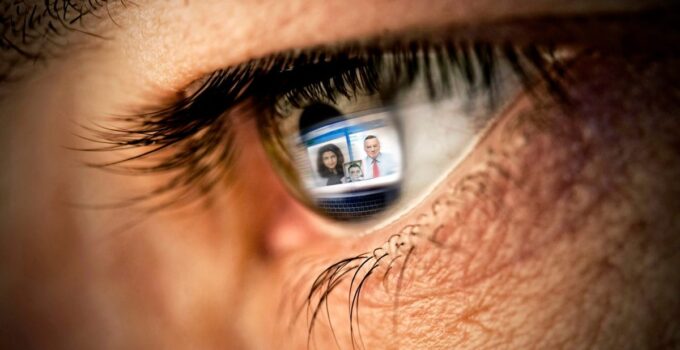In today’s digitally immersive world, most of us spend more time looking at screens than we do the sky. Between meetings, doomscrolling, editing, and winding down with Netflix, it’s easy to forget our eyes weren’t designed for this kind of constant exposure. But here’s the truth: your eyes are working harder than you realize—and they’re telling you, subtly, when they’ve had enough.
This guide isn’t about cutting screens out of your life (because that’s unrealistic). It’s about helping your eyes survive—and even thrive—in a screen-heavy routine.
Key Highlights
- Digital screens cause muscle fatigue, dryness, and long-term strain.
- Blue light isn’t just a buzzword; it can delay sleep and affect vision health.
- Blinking habits change during screen use—causing eye dryness and discomfort.
- Environmental factors like AC, poor lighting, and screen glare amplify the problem.
- You don’t need drastic changes—just smarter habits and small tools.
Why Screens Tire Out Your Eyes
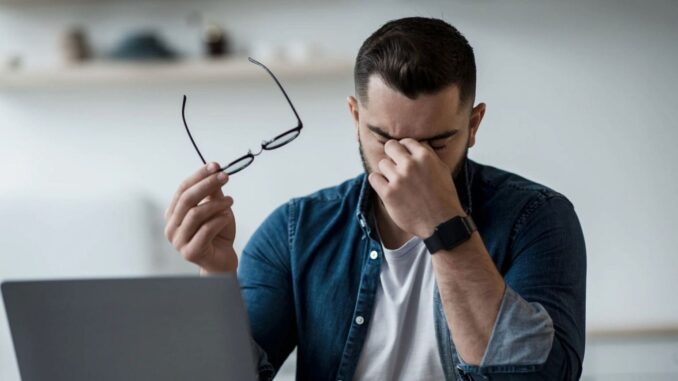
Source: euronews.com
You know that gritty, burning feeling after hours in front of a screen? That’s not just tiredness—it’s a combination of muscle fatigue, moisture loss, and sensory overload.
When you focus on close-up tasks—like typing emails or scrolling TikTok—your ciliary muscles (the ones inside your eye responsible for near vision) are constantly flexed. Unlike running where you alternate motion and rest, these muscles are stuck in “on” mode for hours. Over time, this leads to fatigue, blurred vision, and headaches.
Add to that the fact that we blink less while using screens—often just 5–7 times per minute compared to the normal 15–20—and your tear film dries out faster. This leads to dry patches on your eyes, irritation, and that all-too-familiar urge to rub them.
What Blue Light Really Does
Forget the fearmongering for a moment—blue light isn’t inherently evil. It’s a natural part of daylight, which helps regulate your circadian rhythm. But overexposure—especially late at night—confuses your brain into thinking it’s still daytime. That means melatonin gets suppressed, sleep gets delayed, and your body never truly rests.
When screens are your main source of light (like phone scrolling in bed), blue wavelengths scatter more aggressively, making it harder for your eyes to focus. That scattered light increases visual noise, forcing your eyes to work harder.
Small changes—like reducing screen brightness at night or using built-in Night Shift modes—can make a real difference. And if your workday includes long screen hours, blue light filtering glasses (or software-level filters) may help reduce fatigue.
Supporting Eye Health from the Inside
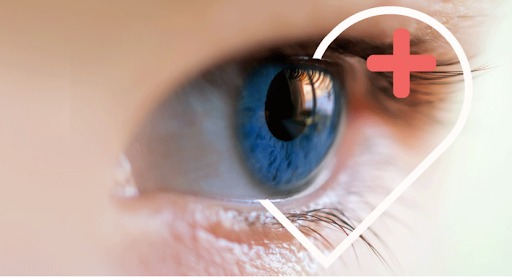
Source: eyeonceclinic.com
While lifestyle changes are key, some people also look for nutritional support. If your eyes often feel tired or irritated – especially in dry environments or during allergy seasons – consider adding an eye health supplement to your daily routine.
Supplements rich in ingredients like lutein, zeaxanthin, omega-3s, and bilberry extract can help support tear film stability, protect against oxidative stress, and nourish retinal cells. They’re not a miracle solution, but over time, they can form a foundation of internal support for visual health, especially when paired with better screen hygiene.
Are You Blinking Enough?
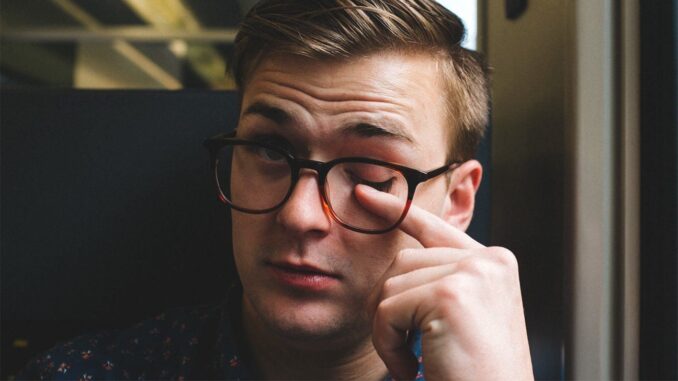
Source: healthline.com
Let’s try something right now: blink. Really blink—slowly and fully.
Chances are, you hadn’t done that in the last few minutes. And that’s the problem. Most of us engage in partial blinking during screen use. We don’t close our eyelids all the way, which prevents the full distribution of protective tears.
Partial blinking leads to dry eye symptoms even in people with otherwise normal vision. The fix? Schedule “blink breaks” throughout your day. Every 20 minutes, look away from your screen, close your eyes completely for a few seconds, and let your tears do their job.
You can also practice the 20-20-20 Rule: every 20 minutes, look at something 20 feet away for at least 20 seconds. This relaxes the focusing muscles and resets blinking patterns.
Light, Air, and Ergonomics Matter More Than You Think
Here’s a scenario: you’re sitting at your desk with fluorescent overhead lights, an open laptop, a glowing second monitor, and an AC vent blowing dry air toward your face. Sound familiar?
Each of those elements—harsh lighting, poor humidity, and airflow—contribute to eye strain.
To build an eye-friendly workspace, try this:
- Adjust screen brightness to match the room. Too much contrast leads to squinting.
- Use indirect lighting when possible. A small lamp behind your screen reduces glare.
- Invest in a humidifier if you live in a dry area or work near air vents.
- Position your screen about an arm’s length away and 4–5 inches below eye level.
- Avoid facing windows directly to reduce external glare.
These changes reduce unnecessary muscle effort and keep your tear film stable longer.
Screens Before Bed: A Habit Worth Rethinking
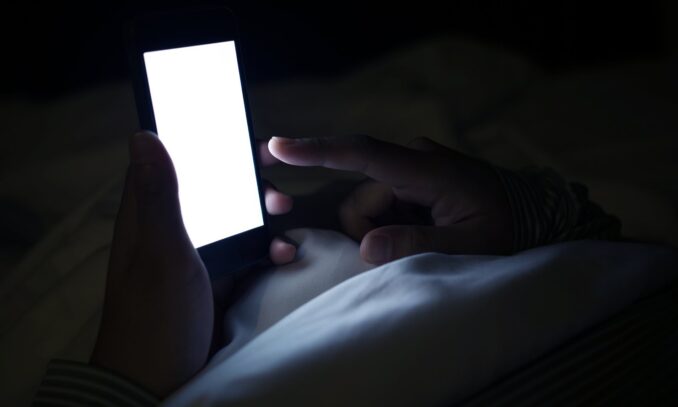
Source: dailymail.co.uk
Many of us unwind with screens—scrolling, streaming, gaming—but that habit might be delaying your rest without you realizing it.
Your body needs a clear signal to start producing melatonin, and that signal is darkness. Screen use within an hour of bedtime suppresses this signal, delaying sleep onset and reducing sleep quality.
To protect your vision and your sleep:
- Dim your screen or enable “Night Mode” after sunset.
- Stop using screens 45–60 minutes before sleep when possible.
- Use warm-toned light bulbs in the evening to mimic sunset.
If you must use your device at night, enable blue light filters or wear amber-tinted glasses that block disruptive wavelengths.
Hydration and Diet: Often Overlooked, Always Relevant
Dehydration doesn’t just affect your muscles—it impacts tear production too. If your water intake is low, your eyes will dry out faster, especially in heated or air-conditioned environments.
In terms of diet, focus on:
- Omega-3 fatty acids, which support tear production and reduce inflammation.
- Vitamin A, crucial for corneal health.
- Antioxidants like vitamin C and E to fight cellular damage.
- Lutein and zeaxanthin, which filter harmful light and protect the retina.
Eating more leafy greens, orange vegetables (like sweet potato and carrots), eggs, and fatty fish can nourish your eyes at a cellular level.
Smart Breaks Make a Bigger Impact Than You Think
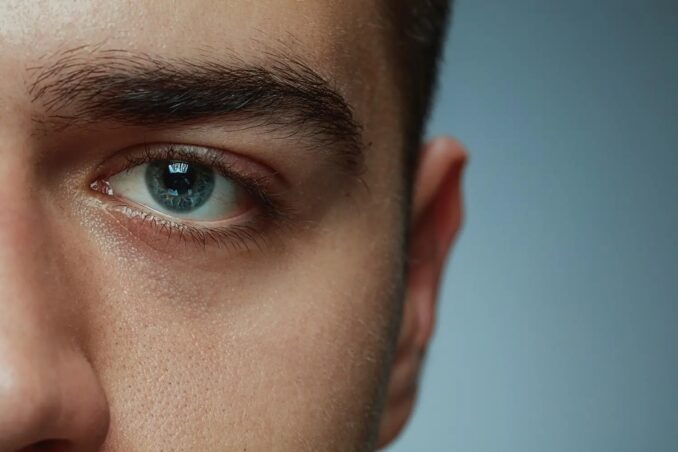
Source: crmd.net
If you work long hours, productivity sometimes trumps self-care. But micro-habits during the day can prevent long-term eye problems.
Here are realistic practices to build into your screen-heavy day:
- Use timers or apps to nudge you to look away every 30–60 minutes.
- Close your eyes for 10 seconds between meetings or tasks.
- Stand up and stretch—full body movement helps your eyes refocus.
- Switch to audio tasks when possible (podcasts, voice notes) to rest your eyes.
- End your day with a non-screen hobby—reading print books, stretching, or even journaling.
These don’t take much time—but they give your eyes something they rarely get: a chance to reset.
Conclusion: Balance Over Perfection
You’re not going to throw away your phone or quit your job because of screen time. That’s not the point. The goal is awareness—understanding the tiny ways our habits strain our vision, and how just a few intentional shifts can create long-term relief.
Protecting your eyes in a screen-filled world isn’t about strict rules or fear—it’s about paying attention. To how often you blink. To the light in your room. To how dry your eyes feel after a video call.
And when needed, giving them a little help—from hydration, smarter habits, or even an eye health supplement designed to nourish them from within.
Because your eyes show up for you every single day. It’s time to return the favor.


